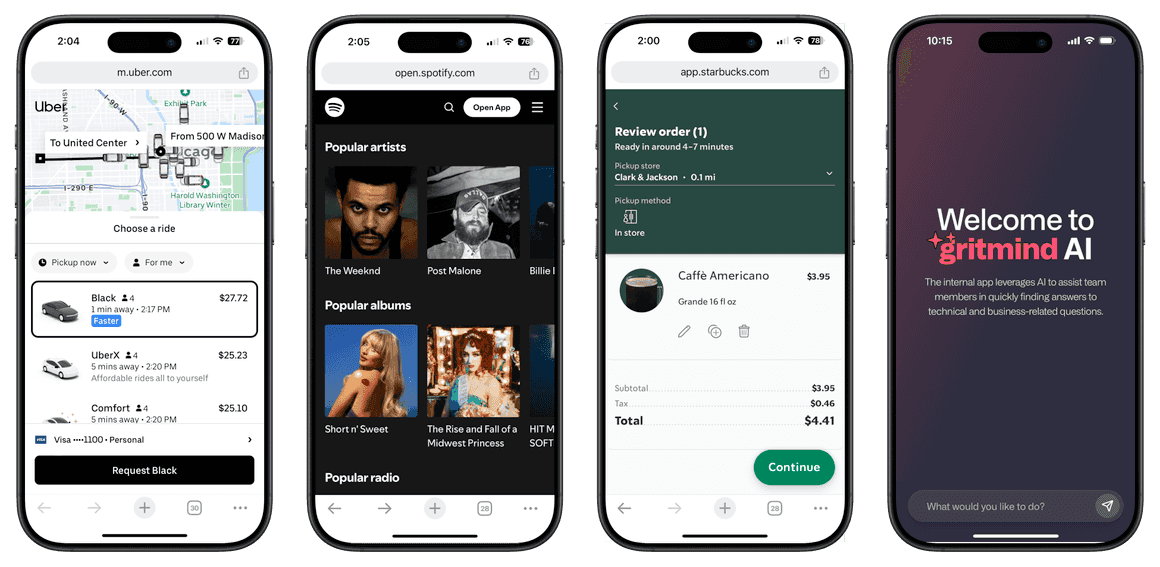Let's be direct: you probably don't need a native app. The reflexive push toward native mobile development is costing businesses millions in unnecessary development and maintenance costs. Progressive Web Apps (PWAs) can deliver what most products need—and they can do it faster, cheaper, and with broader reach.
The True Cost of Native Mobile App Development in 2024
We've all sat through that meeting. Someone confidently declares, "We need an app!" What follows is the predictable march toward native development, complete with separate iOS and Android codebases, app store submissions, and endless update cycles. But here's the uncomfortable truth: this approach is often a massive waste of resources. Overall, retention rates across all platforms for mobile apps hover around 7% after 30 days.
Native apps made sense in 2012. They're rarely the right default choice in 2024.
Why Progressive Web Apps Are Transforming Business Mobile Strategy
Progressive Web Apps deliver what businesses actually need:
- Instant Market Access: Skip the app store approval process entirely. Your product reaches users immediately through their browsers.
- Universal Compatibility: One codebase runs everywhere—desktop, mobile, tablet. No platform-specific development needed.
- Rapid Updates: Deploy changes instantly. No waiting for app store approval or user updates.
- Lower Development Costs: Build once, run anywhere. Your team focuses on features, not platform-specific code.
- SEO Benefits: Unlike native apps, PWAs are discoverable through search engines.
- Analytics: Leverage standard web analytic platforms.
Treat your development of a PWA as a first class citizen – just like you would a native mobile app. This isn’t the same as simply converting your current web solution into a PWA. The user experience should be mobile first – optimizing for tasks and navigation for mobile users.
Common PWA Misconceptions: Debunking Performance and Feature Myths
Your team may not be familiar with PWAs or may have outdated assumptions about their capabilities. Let’s tackle the likely objections head on.
Mobile App Performance: PWA vs Native
"Native apps are faster."
For most business applications, modern PWAs are indistinguishable from native apps in terms of performance. Both Pinterest and Twitter were able to achieve comparable or improved performance with PWAs compared to native apps.
Progressive Web App Features and Device Access
"We need access to device features."
Modern browsers support geolocation, camera access, push notifications, and offline functionality. Unless you need specialized sensor access or complex Bluetooth interactions, PWAs have you covered.
Customer acquisition outside the app store
“Customers are more familiar with downloading apps directly from the app store.”
Depending on your target audience, alternative distribution channels may not be as big of an obstacle as you fear. For Mishipay, moving to a PWA increased adoption rates.
Mobile App User Experience: Progressive Web Apps vs Native
"Native feels more polished."
This was true five years ago. Today's PWAs can be added to the home screen, launch in full-screen mode, and deliver smooth, app-like experiences. Users often can't tell the difference. You may be surprised to learn that some of the most popular native apps are also available as PWAs including Starbucks, Spotify and Uber. At Gritmind, our gritmindAI PWA enables employees to ask questions via chat and access internal resources to resolve technical and business inquiries quickly, from anywhere.

Mobile App Development Alternatives: Beyond Native and PWAs
PWAs are not the only alternative to native mobile development. Teams should also consider the options below and evaluate the best path based on the needs of their business.
Cross-Platform Mobile Development:
If you absolutely need native functionality, consider cross platform options before committing to pure native development. Frameworks like React Native and Flutter offer a compelling middle ground. They deliver native performance while maintaining a largely single codebase.
The key benefits include:
- Native-level performance and access to device features
- Familiar app store distribution model that users trust
- A single team can develop for both platforms
- Lower development costs than pure native
- Extensive ecosystem of pre-built components
Low-Code Mobile App Solutions:
Low code tools can work for simple apps. But, proceed with caution. These platforms often present significant limitations including:
- Limited customization options
- Performance bottlenecks with complex features
- Higher costs at scale
- Vendor lock-in risks
- Limited access to native device features
- Potential technical debt from proprietary solutions
When to Choose Native App Development
Let's be clear: there are cases where native apps are the right choice. Build native when you:
- Need complex device sensor integration
- Will leverage geofencing
- Access custom camera controls
- Require advanced Bluetooth functionality to communicate with physical devices
- Read contact information
- Send SMS
- Leverage advanced iOS notifications
But these cases are rarer than most businesses think - and new capabilities are rapidly becoming available eliminating these gaps
The Bottom Line: You can do more with less
Alternatives to native development offer a faster path to market, broader reach, and lower costs. Unless you have specific, documented requirements that absolutely demand native functionality, start with a PWA, validate your product, and let real user needs—not assumptions—drive your mobile strategy.
Ready to rethink your mobile approach? Let's talk about how a strategic approach to mobile development can accelerate your product's success.
